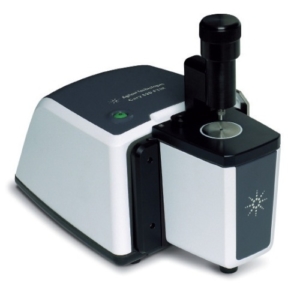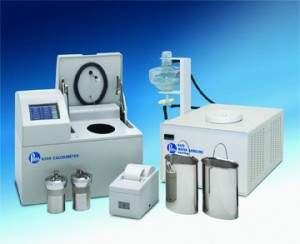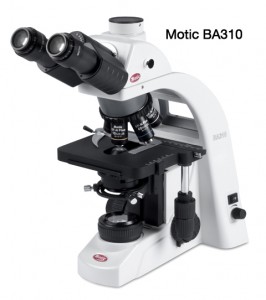Investigative Analysis
From unknown contaminants, raw materials characterization, competitor product analysis, process diagnosis, or process development, we offer personalized attention to your special project. Let Dr. Randall Wanke use his 25 years of industrial and academic research experience to bring together QCAnalytical personnel and resources to tackle your scientific inquiries. Call us with your issue and we will clearly explain the necessary steps needed to resolve your investigative analysis.
What can we investigate for you? Read about some of the Special Projects our testing laboratory has resolved.
Special Project Case Examples
Raw Material Characterization
Material Consistency: An animal by-product specialties producer anticipated a change in supplier of a key raw material. To insure consistent raw material between different suppliers, QCAnalytical analyzed the anticoagulant powder using ion chromatography to determine citrate and tripolyphosphate the formulation ratios.
Process chemical: The WWT operator of a meat packaging plant wanted to check the purity of a MgO alkalinity adjuster. ICP-OES established the purity of the MgO to be 99% with 0.9% CaO.
Raw Material Comparison: A powder-coater wanted to test powder coat resins from three different suppliers. Particle size distributions of the different powder coating resins were determined by measuring particle size from light microscopy images and then correlated to product performance.
Mystery Testing
Unknown Identification: A municipal water customer blamed the city water department for clogging up the filters on their convenience store soda fountain. The water department was vindicated after QCAnalytical characterized by FT-IR the yellow, pudding-like material to be ion exchange resin fines from the customer’s water purification system.
Mystery Residue: Some kind of a “creosote” residue would drip down onto recycled paper “egg-carton” packaging inserts as they passed through the drying furnace. The residue was dried overnight and identified using FTIR spectroscopy to be a hydrocarbon lubricating oil.
Mystery Material: A drinking water operator wondered what the “snow-globe-like” material coating cement structures within his clear well was. Microscopy showed that substance was clusters of beggiatoa bacteria which thrived on the sulfur in the drinking water source.
Unknown hazard: A swab of unknown residue leaking from a paint drying ventilation system was traced by FTIR and GC-MS analysis to ethylene ethylacrylate copolymer, a key component in some paints.
Unknown Process Residues: An oily substance from the vacuum side and an oily residue from the exhaust side of a process coater vacuum system were compared to various process oils and greases and matched to TKO-77 Ultra™ vacuum fluid on the vacuum side and Anderol™ 555 diester compressor lubricant on the exhaust side by FTIR spectroscopy.
Residue Comparison: A biodiesel plant wanted to check whether a production plant residue matched up to a biodiesel soap/wax residue. The unknown and soap/wax residue samples were similarly dried and burned in a muffle furnace. Both had the same percentage organic and inorganic makeup and additionally, FTIR further confirmed that the organic content of both was the same.
Unknown Waste: A waste water treatment plant got hit with some milky looking waste water. The mystery substance was extracted and identified by FTIR to be linoleic acid from an influx of vegetable oil.
Process Residue Quantitation: Different agents are used in natural gas drying operations. A client wanted to determine the composition of the drip condensate that collected from natural gas drying. Karl Fisher titration and FTIR spectroscopy determined the condensate to be 3.5% water, 87% motor oil, and 9-10% TEG.
Contaminant Source: An energy bar manufacturer wanted to know the source of the FOG in its wastewater. Was it from the peanut butter or the chocolate or the sunflower oil or the cocoa butter, etc.? The wastewater FOG was extracted and derivatized to form FAME’s which were identified and quantitated by GC-MS to track down the source of the FOG. It turned out that the FOG was a combination of all oily ingredients.
Reverse Engineering
Reformulation: The supplier of burnishing compound was discontinuing production. Our client wanted to discern it’s composition to pass on to a different formulator. TIC and IC was used to map out the sodium bicarbonate and sodium tripolyphosphate ingredients.
Reverse Engineering: Drag racers use tire treatment to improve jack-rabbit starts. A drag racers favorite tire treatment was becoming unavailable. GC-MS and FTIR were used to unravel the formula.
In-house Reagent Kit: ICP, IC, and GC-MS were used to deformulate a commercial environmental test kit and realize significant cost savings in the lab.
Product/Process Testing
Product Evaluation: A manufacturer wanted to see how well their bioaugmentation product remediated benzene from a groundwater sample. SPME-GC-MS was used to monitor benzene concentration over time in groundwater samples charged with the bioaugmentation product.
New Testing Requirement: Different customers can have different requirements. A new European customer requested that a specific European test method be run on the stability of a concrete colorant manufacturer’s colorant. QCAS configured the test protocol. For the test, an aged test sample was compared to a fresh colored concrete sample to see if the color stayed true in the alkaline concrete over time.
Trace contaminants: Trace metal contamination in a penetrant needed to be verified by the manufacturer. ICP-OES was used to quantitate trace cadmium in the product.
Product QC Checks: Medical facilities or dental offices use sonication to more effectively clean medical or dental instruments. A manufacturer of a special “indicator vial” to test the sonicator effiectiveness periodically called on QCAS to verify their active ingredient concentration. GC-MS was used to measure the chloroform concentration in production lots.
Potential Products: Pericarp is a waste product of corn milling. A customer wanted to see how much pentosan 5-carbon sugar could be recovered from the pericarp. Acid digestion was used to convert the pentosan to furfural, which was monitored by GC-MS and related back to pentose content.
Process testing: Superior and consistent hardening of agricultural tillage and planter discs require controlled cooling. Maintaining quench solution viscosity is crucial for controlled cooling. A quench solution viscosity versus quench polymer concentration curve was generated for the customer so that periodic quench solution measurements could be used to adjust polymer concentrations to give the target viscosity.
Tracer Studies
Mix up: Contact time is crucial in drinking water disinfection. Both a pulse lithium tracer study and a step input lithium tracer study were designed and conducted by QCAnalytical to define the effective disinfection contact time at two locations within the drinking water plant.
Trouble Shooting
Mix up: Brake fluid was tested for transmission fluid contamination in a fleet of Humvees. FTIR spectroscopy discerned which vehicles were contaminated and by how much transmission fluid.
Homeowner complaint: Pure water can be corrosive. A homeowner was replacing a hot water heater and dish washer every couple years. Enhanced aluminum and copper metal concentrations were seen by ICP-OES in hot water samples. In a separate incident, these corrosion metals were observed by ICP-OES in hot water sample residues coming from a municipal hot water heater. In both cases, water was over conditioned and became corrosive, particularly the hot water.
Problem Confirmation: Some sediment seeped through a plugged septic sand filter. The operator wanted to know what it was and if it was bacteria slime. Microscopy, with india ink staining, showed that the sediment was waste water bacteria floc with appreciable polysaccharide slime.
Process Problem: A process filter was repeatedly getting plugged. Light microscopy showed that the residue consisted of needle-like crystals and a floc. This residue was dried and burned in a muffle furnace to determine organic and inorganic content. The inorganic needle-like crystals were identified by wet chemical tests and IC as calcium carbonate, which matted over the filter to plug it prematurely.
Problem Identification: A farm drip irrigation system was getting plugged by a reddish residue. ICP-OES confirmed that the primary metal constituent was iron. IRB tests showed that iron bacteria were also present.
Process Problem Tracking: Process residues from various points in an ethanol plant were submitted for analysis. A methylene chloride soluble fraction proved to be vegetable oil by FTIR spectroscopy. The much more prevalent methylene chloride insoluble fraction proved to be a mixture of plant protein and plant cellulose by FTIR spectroscopy.
Litigation Cases
Paint Coating in Question: The paint on the side of a pool blistered. One side claimed that ground water had bubbled behind the paint coating; the other contended that improper application and curing of the paint caused the blistering. QCAnalytical sampled the blisters and discovered by ion chromatography that the water phase was pool water and moreover, by GC-MS found residual traces of paint solvent indicating that the paint was not properly cured.
Competitor Infringement: One cat litter formulator suspected that a popular cat litter manufacturer was using their deodorizer formula. Wet chemistry analysis (ammonia, total phosphorus, FOG) and instrumental analysis (AAS and FTIR) were used to quantitate the amount of ammonium sulfate, TSP, oleic and steric acid, and ferrous sulfate and chelated iron in the competing products to see if the formulations matched up.
Contamination Culprit: Oil and grease from a manhole was compared to that in the abnormally high influx of oil and grease at the WWTP. FOG extraction coupled with FTIR spectroscopy showed both to be nearly identical in their hydrocarbon oil and vegetable oil composition.
Agilent Cary 630 FTIR
The Agilent Cary 630 FTIR spectrometer is versatile, innovative, and intuitive, providing superior quantitative and qualitative information for routine analysis of solids, liquids, and gases. It has a wide range of sample interfaces and high performing optics. The FTIR determines the source of a process residue, the purity of a raw material or the identity of the key ingredient in a competitor’s formulation. It identifies all types of polymers, organic chemical and inorganic materials.
Parr 6200 Oxygen Bomb Calorimeter
QCAnalytical Services’ Parr 6200 Oxygen Bomb Calorimeter increases laboratory testing abilities for your special projects. From Thermodynamic, metabolic and fuel testing to hazardous waste testing, ask how QCAnalytical can get accurate results to your unresolved questions.
Motic BA310
With the addition of the Motic BA310, QCAnalytical Services has increased its capabilities in light microscopy. From particle size and aggregation analysis, crystal morphology, defect analysis, biomass analysis, and microbe classification, let QCAnalytical Services take the first look to examine the biological or physical characteristics of your specimen. Download the Biomass Analysis Spec Sheet here for more information.



